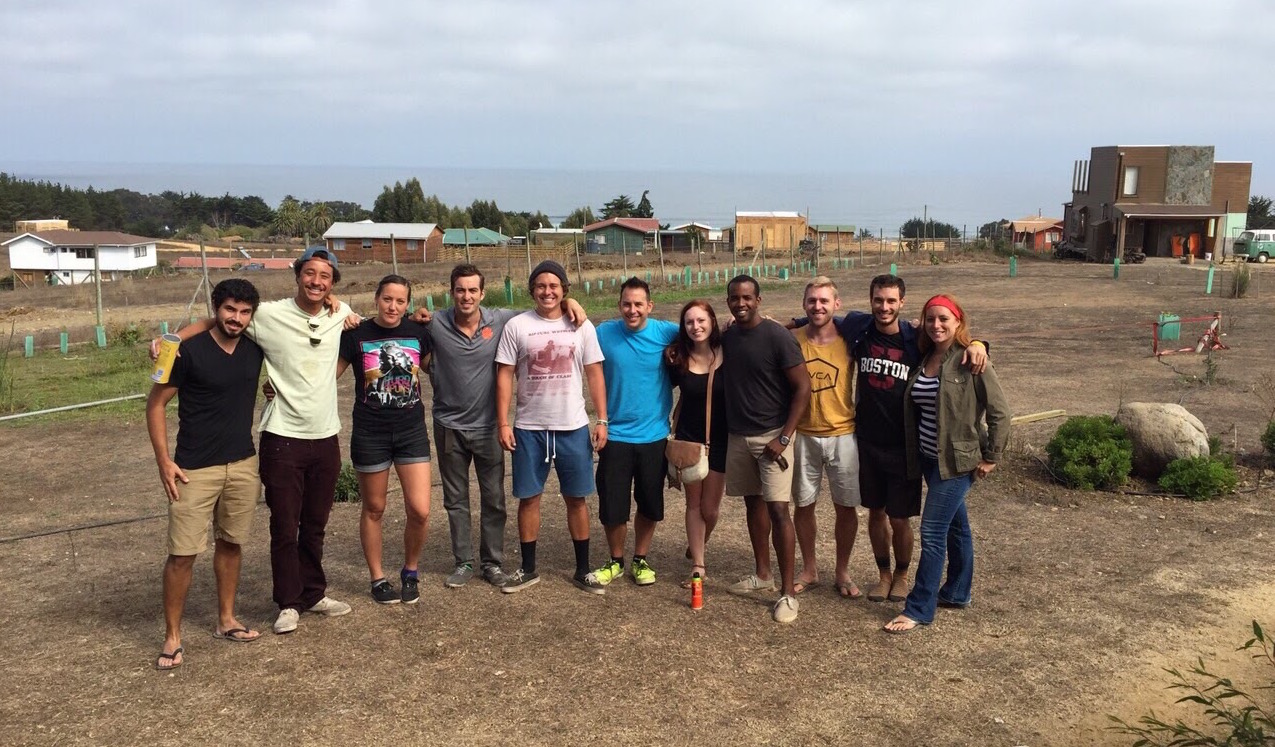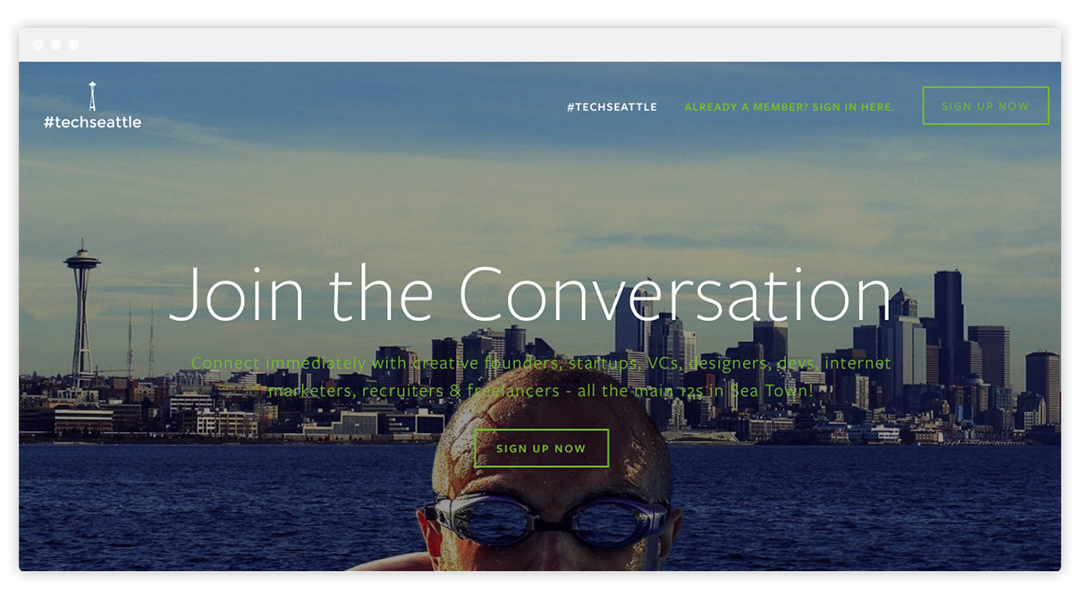How to build online communities with Slack and Typeform
Andrew Mewborn needed to network. So he built his own community.<br>

How many great ideas were born out of a desire to solve a personal problem
Reed Hastings started Netflix because he was tired of explaining to his wife about the ridiculous late fees that companies like Blockbuster were known for.
Sarah Blakely started Spanx to get rid of the “bulge” that was produced when she wore pantyhose. Her company is now worth more than a billion dollars.
Andrew Mewborn wanted to move back to Seattle and do interesting work. His problem? Networking and job hunting takes time.
His solution? Don’t network, build a community instead.
From Santiago to Seattle
Andrew was working with a fledgling startup in Santiago, Chile, that had run its course. He decided to return to Seattle, where he was still in touch with friends from school. And he got excited about what he was hearing.
I was down in Chile. I knew I was going to come back to Seattle and I was talking to friends here and there. They were telling me, “Oh, it’s crazy in Seattle, man. All kinds of startups are coming here.”
Even though I was only gone 8 months, I felt detached from the scene. I thought, “Well, I want to network to get an awesome job with a startup in Seattle. So how do I connect with a ton of people quickly?”
Andrew remembered his trip to Chile. He and his friend arrived with hardly any money and had to find a place to stay. Out of desperation, they eventually bartered a deal with some guys who had an event space and a hostel.
We said, “We’ll throw a hackathon every two weeks if we can stay at your hostel for free.” They were like, “Alright, cool.” We got free living by being able to do that.
Imagine us just showing up, not knowing anybody and finding a place. I’m proud of that story, but I didn’t want to go through that again when I got back to Seattle.
The problem was clear. How could Andrew connect with a burgeoning tech community in Seattle without meeting people and networking the “old fashioned” way?
Building a community
Andrew decided to build an online community for the city he wanted to network in. He leveraged his network and started #techseattle. It started out in Google Groups, but soon got out of control.
Before, there was a Google Groups list that was going on. To me, it was chaotic because people would be emailing, sometimes 5000 people at a time, and you would get lost.
I was like, “Dude, this needs to get way more organized.”
Andrew recalled reading about Pieter Levels, creator of the Nomad List, also known for building a startup every month for 12 months straight. Andrew read one of his articles about how he integrated Typeform with Slack to build online communities specifically for “digital nomads”.
Andrew was inspired.
I’m going to start this and see if it takes off.
My buddy, Red Russak, runs this event called New Tech Seattle, which is the largest tech event in Seattle. I asked him, “What do you think about getting this out there?” He was like, “Yeah man, let me know, I could help.” #techseattle then became the preferred Slack channel for ‘New Tech Seattle’ events.
They’re promoting as, “Hey Seattle Tech community, to keep up with what’s going on and talk about stuff, go to this Tech Seattle community place.”
It all started with music recommendations
Before #techseattle, Andrew used the same workflow to create Hashtag Music. According to Andrew:
I just wanted to see what people were listening to.
I came up with the idea for #music while sitting in a buddy’s apartment in Chile. My best friend Armand and I were working on a solar project in Startup Chile, yet I still had a passion for wanting to work on a project involving music.
After a few Piscolas (the Chilean drink of choice) we began to have a conversation around how people share music. Our conclusion: the best music/song recommendations come from friends.
I thought, what was the easiest way to build something that allowed my friends and I to share music?
Around the same time, I began to see Slack communities focused on startups and networking, like #nomads and #startup. I thought, “Why couldn’t Slack also be used to share music with people around the world?” That’s when #music was born.
I saw that #startup had used a typeform for its signup process, and I was pumped about the experience—so I decided I was going to use it as well for #music signups. That of course is when my love and relationship with Typeform began.
Using the same Slack integration with Typeform, he was able to build a small, yet strong community of music lovers.
I launched it, put it up on Chit Chats, which is like Product Hunt for specific Slack groups. Then people started signing up and liking it. People started new channels and new genres. They started sharing music.
Then they started sharing stories behind certain songs, which is where it got interesting. Then developers connected with other developers who had similar tastes in music. Music is this language. If you and your friend like the same song, you have this bond.
I asked Andrew what people were getting out of #music.
I think people are learning from each other. I would say, sound engineers working on their own projects, like music-type projects. They’re able to keep up with other projects related to theirs, how they’re different, what has worked for them, what hasn’t worked for them, and that’s just one specific channel.
Another thing is sharing songs. Taste makers. People who spend hours doing this shit. We have some old guys on there that are actual musicians.
Then you have the people who work at big sellers like Pandora. They’re on there. They’re probably sharing music, but they’re also getting details on what’s going on in the music world.
Currently, #techseattle has over 400 members and #music over 600.
If you’ve been inspired by Andrew’s story and want to set up your own online communities using Typeform, here’s some quick steps to get you going. If you haven’t already got a Typeform account, you can sign up for free.
1. Create a landing page and link to your typeform
Andrew used Squarespace to build a landing page for #music. Then all he had to do was link his Join the community buttons to his typeforms’ unique URLs.
2. Add personality with a background image
Andrew’s #techseattle community was, well, for people in Seattle. What better way to make his typeform relevant by adding a nice image of the city as the background. Here’s how to make your typeform stand out with a background image.
3. Keep your brand identity with custom colors
See that orangey color that Andrew uses on his #music website? Notice how he uses the exact same colors in subtle places throughout his typeform? You can do that too. Learn how to customize your typeform’s colors.
4. Keep data clean by connecting Typeform with Google Sheets
Andrew wanted an easy and clean way to keep track of new signups. He liked to have a Google Sheet open which he could refresh every now and again, so he synced Typeform with Google Sheets.
Want to do more with Typeform? Head over to the Help Center for all the how-tos your heart could desire.





